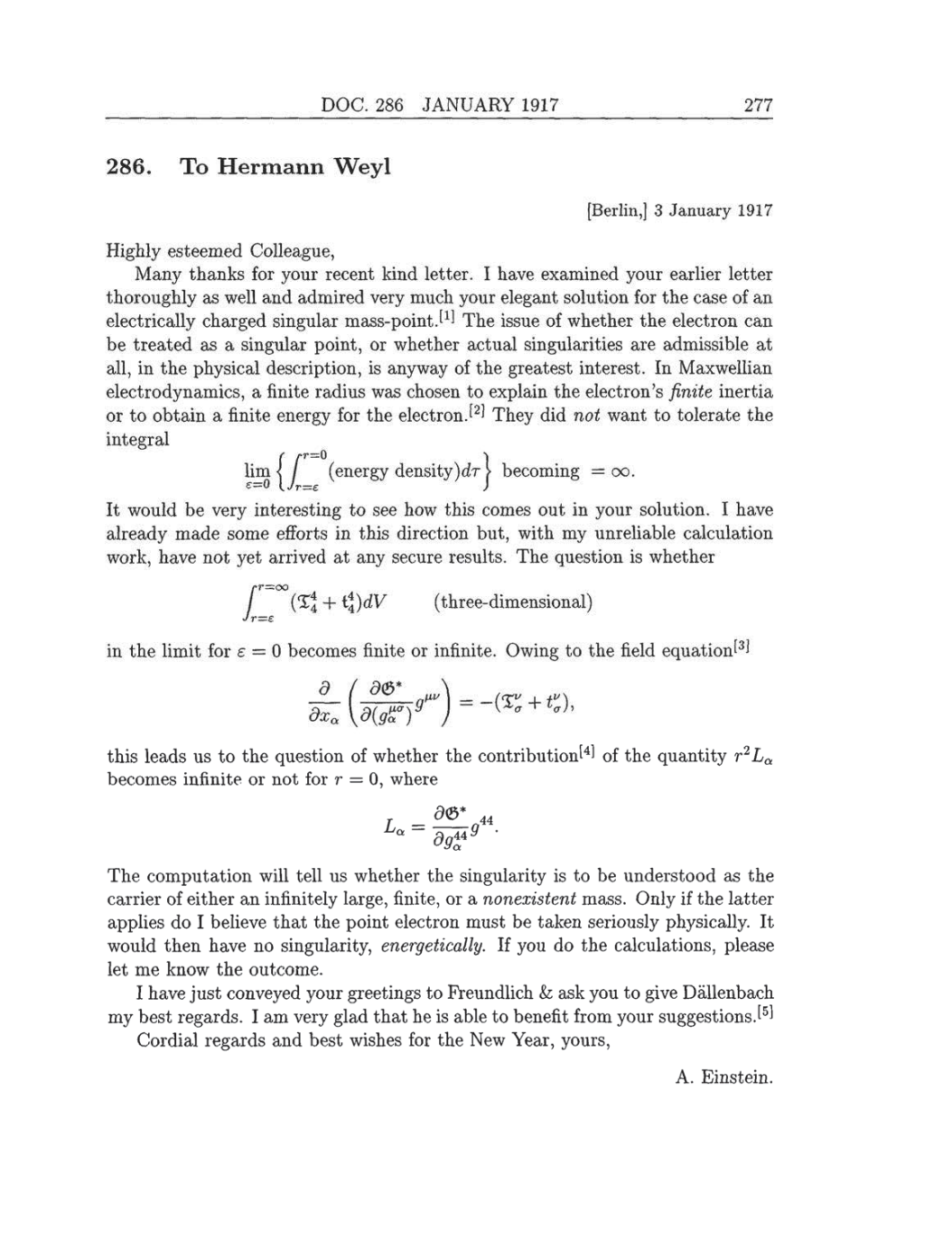DOC.
286
JANUARY
1917 277
286. To Hermann
Weyl
[Berlin,]
3
January 1917
Highly
esteemed
Colleague,
Many
thanks
for
your
recent kind
letter.
I
have examined
your
earlier
letter
thoroughly
as
well
and admired
very
much
your elegant
solution for
the
case
of
an
electrically charged singular
mass-point.[1]
The issue
of
whether
the
electron
can
be
treated
as a
singular point,
or
whether
actual
singularities
are
admissible at
all,
in
the
physical description,
is
anyway
of
the
greatest
interest. In Maxwellian
electrodynamics,
a
finite radius
was
chosen to
explain
the
electron’s
finite
inertia
or
to
obtain
a
finite
energy
for
the
electron.[2] They
did not want to
tolerate the
integral
lim
e=0
{ƒ(energy
density)dr} becoming
=
oo.
It
would be
very
interesting to
see
how this
comes
out in
your
solution.
I
have
already
made
some
efforts in this direction
but,
with
my
unreliable calculation
work,
have not
yet
arrived at
any
secure
results. The
question
is
whether
pr=oo
/
(I*
+
i\)dV
Jr=£
(three-dimensional)
in
the
limit for
e
=
0
becomes finite
or
infinite.
Owing
to
the
field
equation[3]
d
dxQ
d3*
dCsrj!
this
leads
us
to
the
question
of
whether
the
contribution[4] of
the
quantity
r2La
becomes infinite
or
not
for
r
=
0,
where
La
-
"44
The
computation
will tell
us
whether
the
singularity
is
to be
understood
as
the
carrier
of
either
an
infinitely large, finite,
or a
nonexistent
mass.
Only
if
the latter
applies
do
I
believe
that the
point
electron must be taken
seriously physically.
It
would
then
have
no
singularity,
energetically.
If
you
do
the
calculations, please
let
me
know
the
outcome.
I
have
just
conveyed your greetings
to
Freundlich
&
ask
you
to
give
Dällenbach
my
best
regards.
I
am
very glad
that
he
is
able to benefit from
your
suggestions.[5]
Cordial
regards
and
best
wishes
for
the
New Year,
yours,
A.
Einstein.
